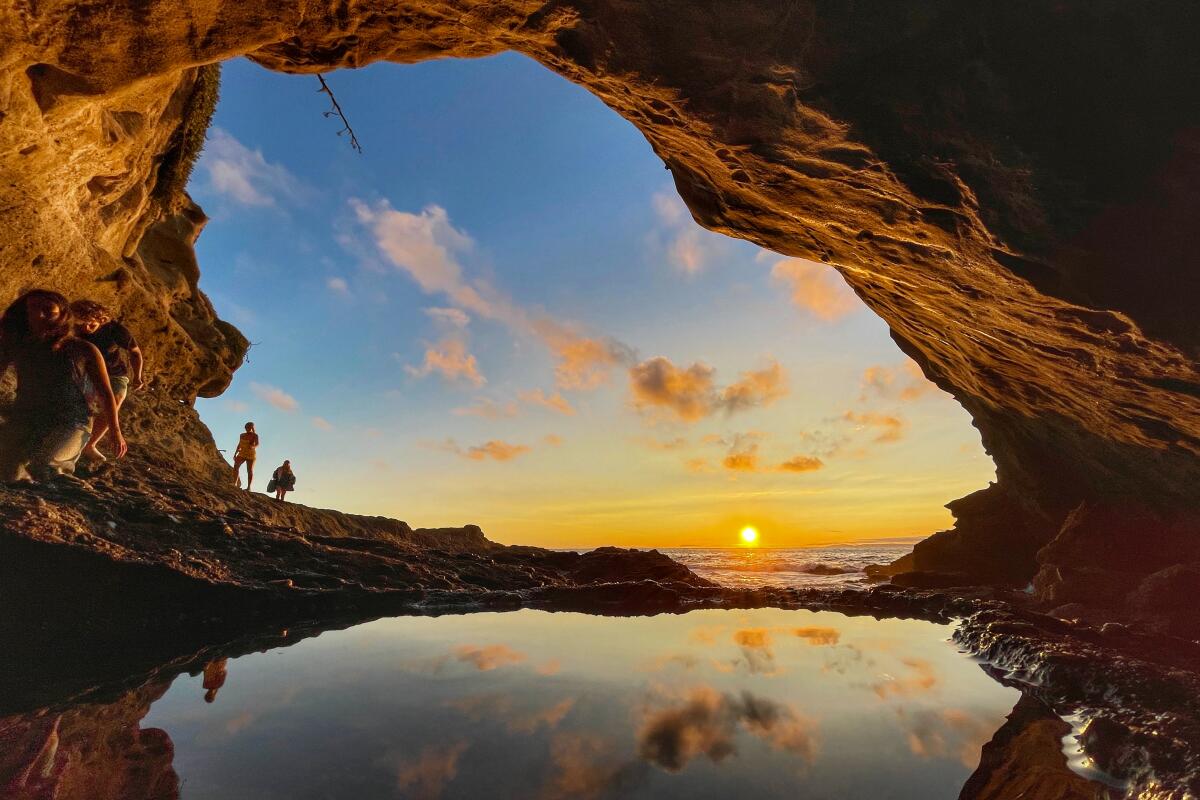
8 stunning SoCal sea caves to visit during the winter low tides
- Share via
Visiting sea caves isn’t just about seeing a cool grotto carved out by the ocean — it’s also about the journey to find these caverns. There are cliffs to descend, rocks to scramble, tide pools to tiptoe around and sea grass to avoid slipping on (trust me on this).
Southern California is particularly good for sea cave hunting because the coast features large bluffs, fault lines and a relentless ocean. Carved out of rock cliffs that date back as many as 75 million years, caves are formed by waves pounding against the water line. Where there’s a crack or fault in the cliff, a cave slowly develops. Every cave has its own personality and tells a story that can be decoded only by careful observation. Some are just a few feet deep, while others could fit an NBA regulation basketball court. Cave bottoms are lined with sea life such as mussels, gooseneck barnacles and tiny snails; the rest of the space is a geological treasure trove.
Due to erosion and tidal variations, these caves transform from season to season, year to year. A few years ago it was easy to walk on hard-packed sand right through the cave at Thousand Steps in Laguna Beach. Nowadays, all the sand has washed away, exposing enormous boulders. To enter, one must hop, skip and jump.
Most sea caves (except the ones in the La Jolla Underwater Park) must be accessed during low tide — look for a tide that’s below -1 on the tide table. Make sure to plan ahead by checking the tides, surf and swell (the lower, the better); you can set up alerts for low-tide events on apps such as Tide Alert (NOAA). Arrive about an hour before the lowest tide so you have time to find the cave, explore in and around it and head safely back. At most, it’s a three-hour adventure before the tide comes in.
A word of warning: Always use caution before entering a cave, and avoid sea caves in the aftermath of events like the recent storms in L.A. County. Brett F. Sanders, a professor of civil and environmental engineering at UC Irvine, studies flooding and erosion hazards. “Sea caves are always at risk of flash flooding from strong waves,” Sanders says. “A big storm event can trigger an instability of the rock surrounding the cave, leading to a partial or even complete collapse of the cave.” Furthermore, “With a big winter storm, the waves can be much bigger, which heightens the strength of currents in and out of the caves,” he says.
So hang back and watch waves entering the cave before you go in yourself, and be mindful of timing. When in doubt, just look from afar. It’s still an amazing experience.
Here are the best sea caves to check out during SoCal’s winter, when the tides are at their lowest. Don’t forget to bring sturdy shoes that can get wet and an adventurous spirit.
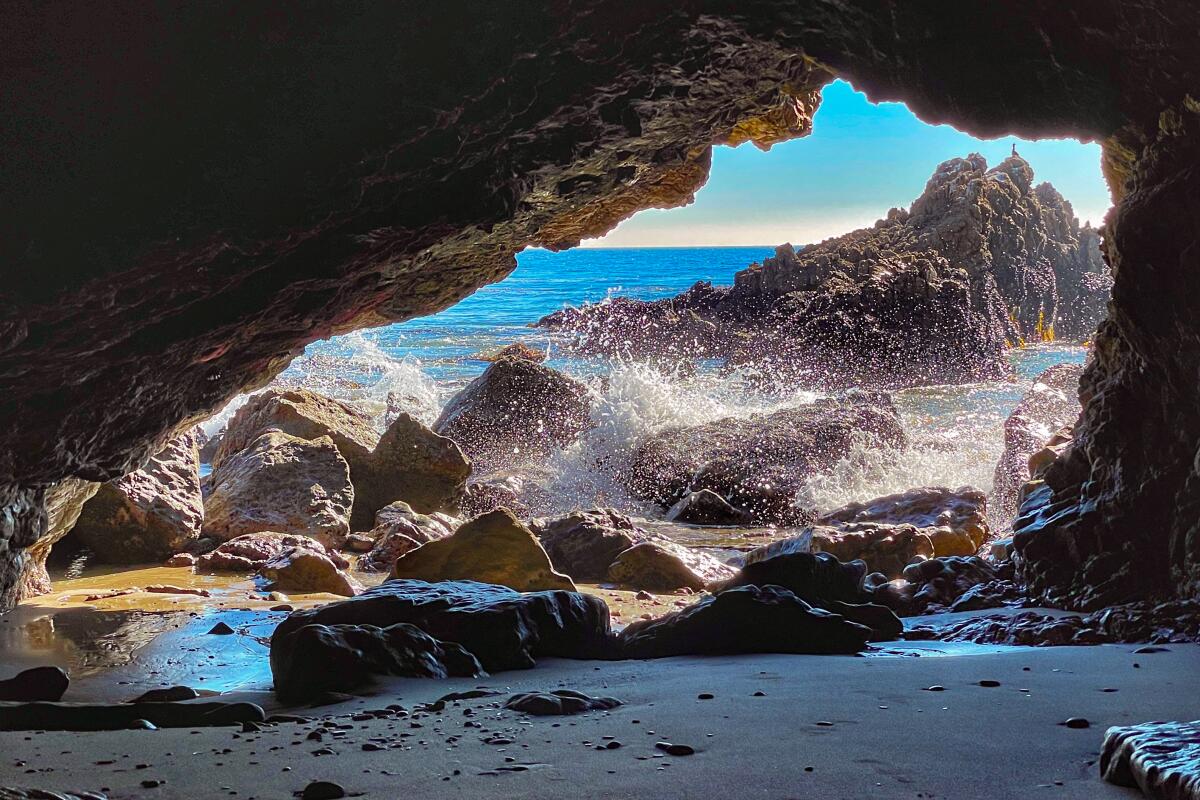
Leo Carrillo State Park
After a few minutes of rock scrambling, you will see the opening to the cave. Once inside this deceptively deep cave, you can watch water splashing on the rocks and pelicans flying by as you gaze at the shore. A peephole, carved halfway back into the cave, offers additional light.
There is limited street parking on PCH, or you can park in the lot for $3 per hour or $12 for the day.
Bonus tip: After enjoying the cave and tide pools, head to Neptune’s Net for clam chowder and a basket of fried fish and chips.
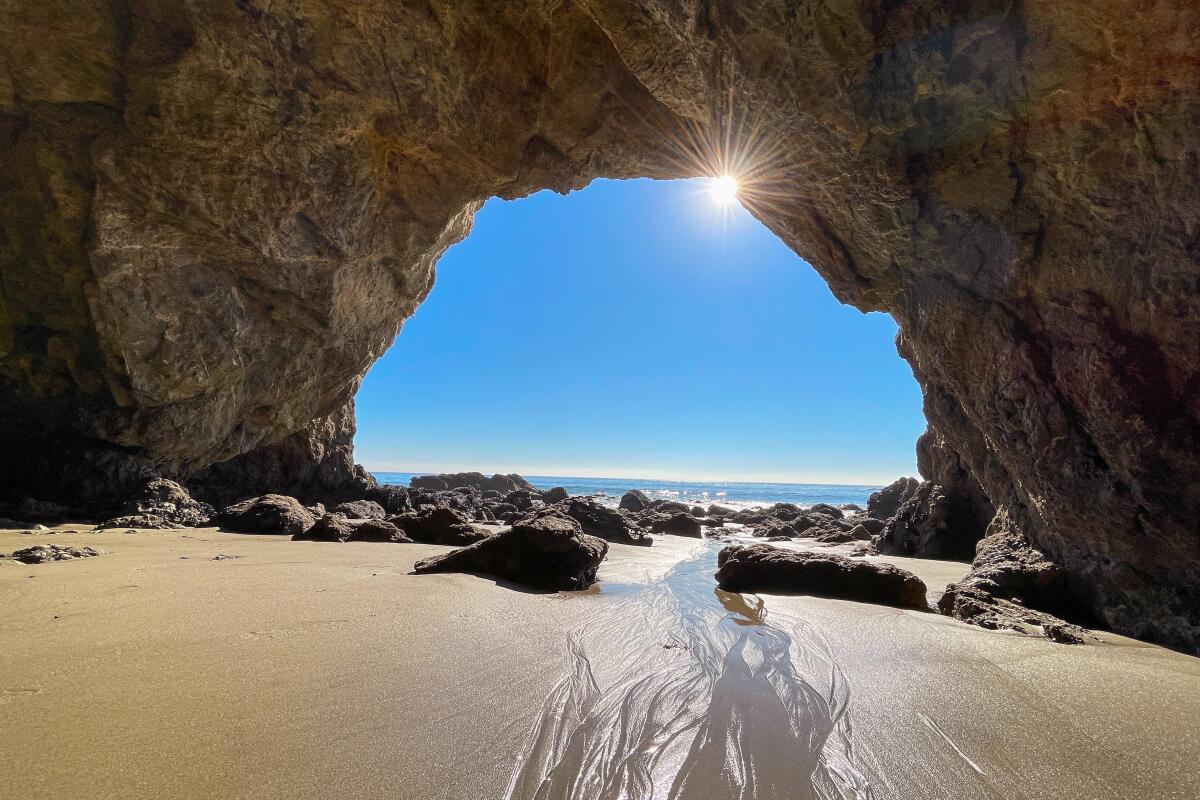
El Matador Beach
You’ll see a freestanding 20-foot rock that looks like a colossal elephant with several cavities. Hundreds of mini sea caves dot the cliff wall. The holy grail of them all is a short walk up the beach to the north. Pass two sets of private steps to homes above, and the sea cave will appear.
Duck inside to find a maze. The main section of this cave is so cavernous, containing caves within caves, that it’s like an apartment building.
El Matador is also fantastic for bird watching and tide pooling.
Parking is available in a small lot with hourly rates.
Bonus tip: Make a quick stop on your way to the cave to pick up a picnic of sandwiches and a charcuterie board at Vintage Grocers.
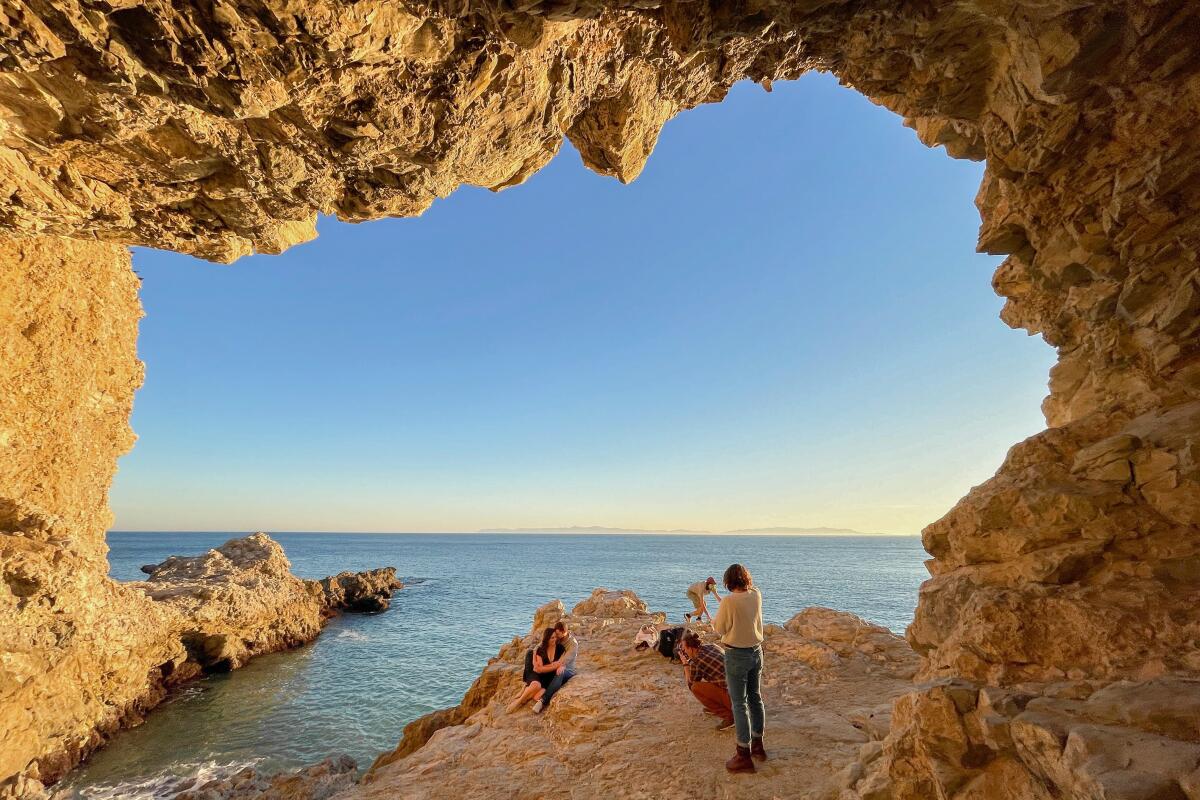
Hudson’s Bluff (a.k.a. Terranea Cove)
To reach it, enter the Flowerfield Trail (at the corner of Nantasket and Sea Cove drives) and go through the caged fence tunnel. Turn right at the end, then follow the path toward the resort until the first concrete steps. At the bottom of the steps, turn left, following the paved road down to the beach. The caves are at the far left end of the little rocky beach. Climb up the rocks to stand in the dry cave and look down at the sea cave while beholding the breathtaking Catalina views.
There is free street parking right before the entrance to the Flowerfield trail.
Bonus Tip: To make the most of this location, book a day membership at the Terranea resort for use of the spa, fitness center and pool (available Monday through Thursday) or grab a bite at Nelson’s on the property.
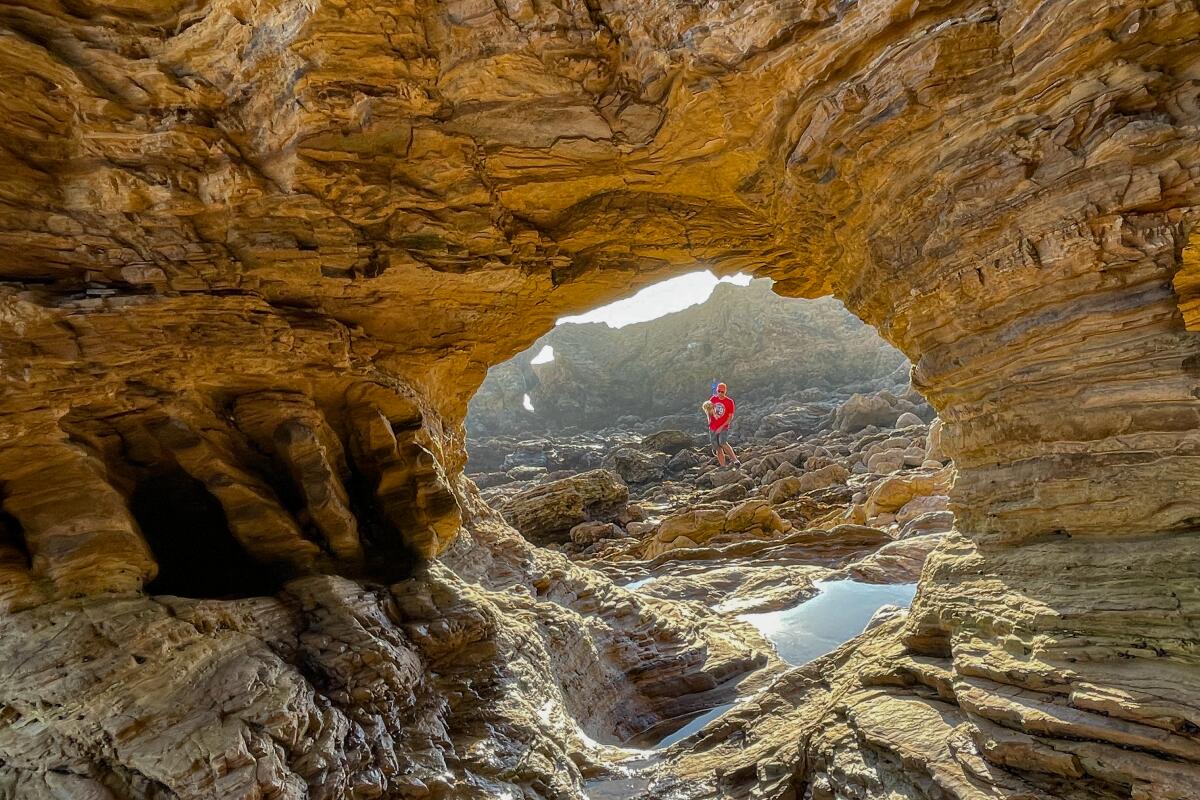
Little Corona del Mar to Crystal Cove
The stroll is overflowing with riveting rock formations. The most eye-catching has to be the Van Gogh-like rocks below the observation point on the way to Crystal Cove. The layers upon layers of sediment could have been inspiration for his “Starry Night.”
If you’re worried about the tide coming in before your safe return, it’s possible to walk one way on the beach and then back on the road. Walk in Crystal Cove until you see the first stairway. Take that to Pacific Coast Highway, then walk north to Poppy Avenue.
At the end of your adventure, roam the massive stretch of tide pools in Little Corona del Mar to find snails, spiny lobsters, anemones, bat stars and adorable sea hares.
Type “Poppy Avenue” into your GPS and find free street parking in the vicinity.
Bonus tip: Drive 2½ miles south on PCH and have a date shake and a seared ahi tuna sandwich at the Crystal Cove Shake Shack while scanning for whale spouts off in the distance.
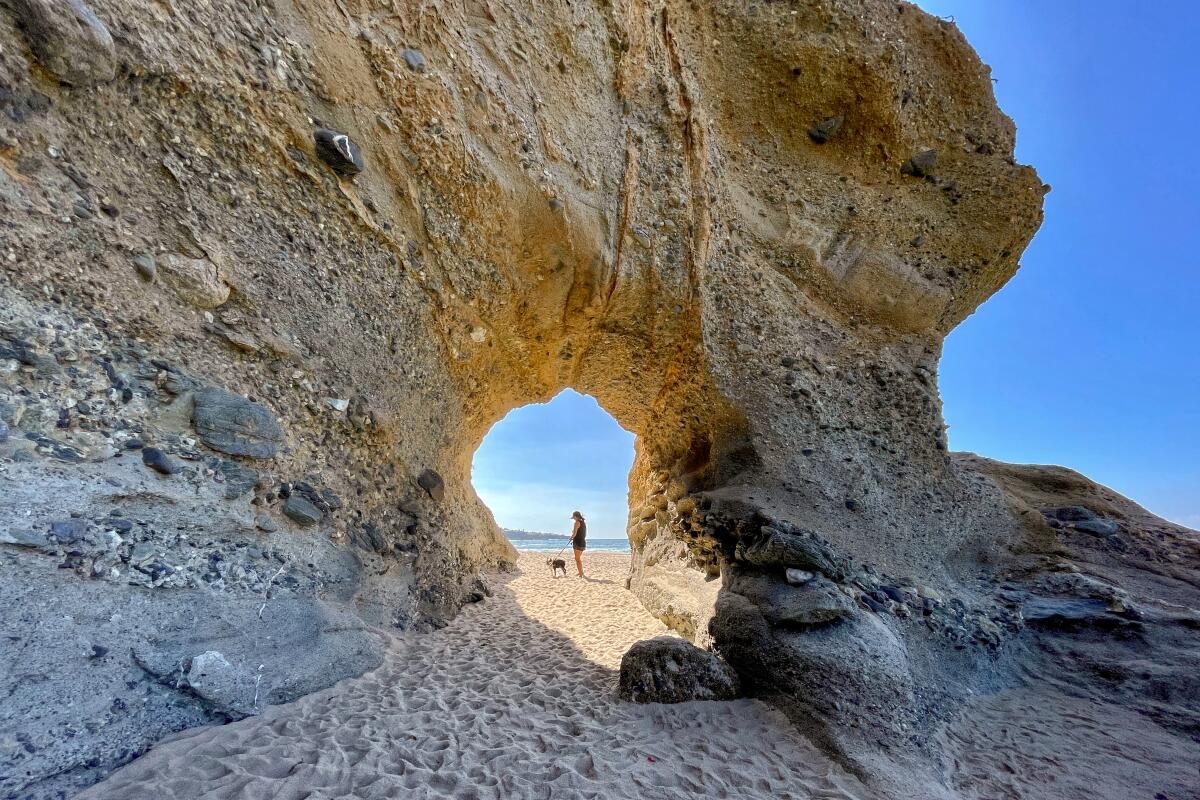
Treasure Island Beach
The short walk from the car to the beach is one of the prettiest in all of Orange County: Hummingbirds zip around the orange flowers of mature succulents. Green vines drape the bluff next to fuchsia bougainvillea and little yellow and purple blooms. Gracefully tall palms erupt from the cliff to create a stunning landscape.
Follow the path behind the Montage until you see the first set of stairs or the ramp down. Once on the beach, head north to find the arch right around the bend. There are great tide pools to explore here as well.
Hourly parking is available at the Montage. There are also some free spots along PCH, and there’s a small lot at the end of Wesley Drive.
Bonus Tip: End the day with a bite from the Lost Pier Cafe on Aliso Beach.

Thousand Steps Beach
To get down to the beach, you don’t need to actually walk 1,000 steps. It’s only 220, but it will feel like much more, especially on the steep incline back up to Pacific Coast Highway. The descent is so extreme that some of the homes above have funiculars to ride down to the beach.
Once on the beach, turn left and walk all the way to the end of the beach. You will find the cave there. At the moment there is a stunningly clear, powder-blue tide pool outside the entrance, so you will have to scramble a little. Time it just right, and you can watch the sunset through the massive opening on the other side before heading home in the twilight.
There is free street parking along PCH and up 9th Avenue.
Bonus Tip: To replenish your strength after climbing back up those 220 steps, stop by Brooklyn City Market for tasty pizza made by real New Yorkers.
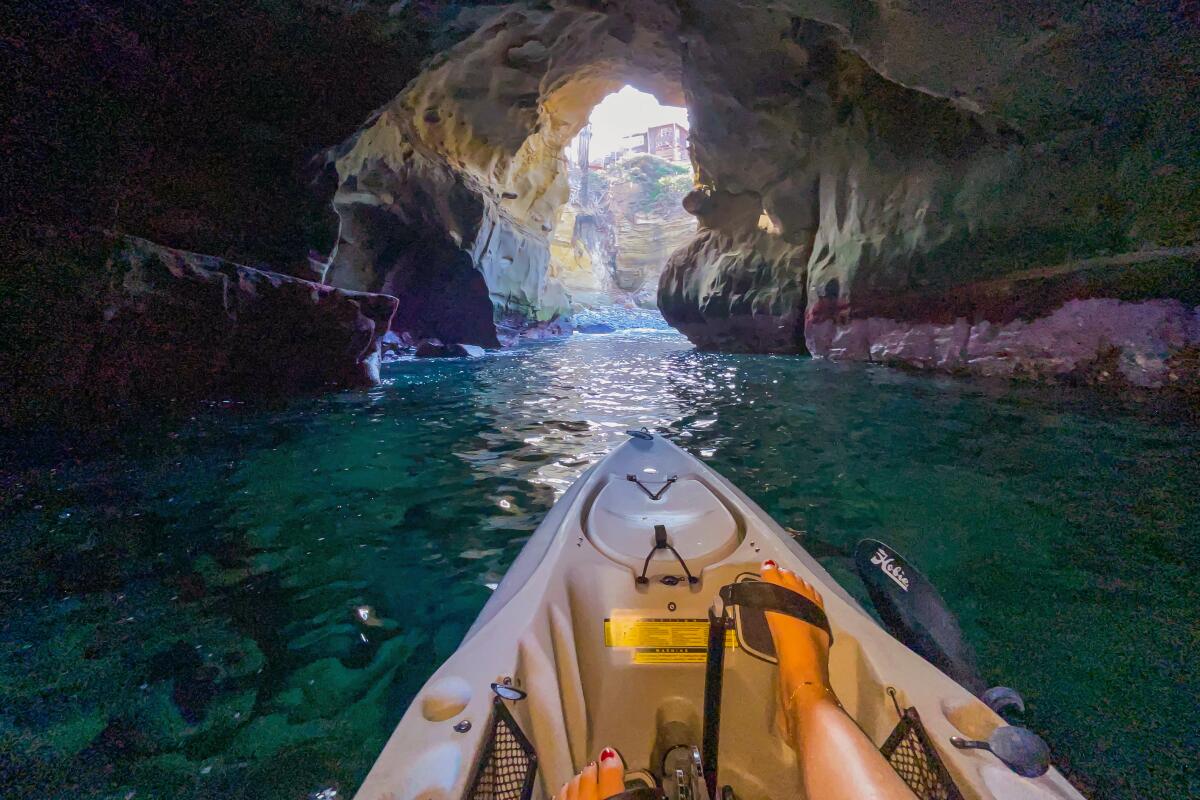
San Diego-La Jolla Underwater Park and Ecological Reserve
There are three main caves to explore. The first is called Arch Cave; it has six offshoot caves, the longest section of which is more than 600 feet deep. A skinny pillar remains to connect two arches, so you can paddle in one arch and out the other. The next largest cave is the Sunny Jim Cave (also accessible through a tunnel leaving the Cave Store; entry costs $10 for adults, $6 for youths). You will know this cave by the steps leading up to the store. Follow the shoreline around the bend to find Clam’s Cave, aptly named because water flushes into the cave, sloshes around and gets spit out the other side. This glorious cave can also be viewed from Coast Boulevard behind the Cave Store.
Along the way, one can spot orange garibaldi fish, pelicans, hundreds of Brandt’s cormorants, sea lions and, with a little luck, whales and dolphins.
Come with your kayak and you can paddle on your own to explore the caves. Otherwise, book with a tour leaving from La Jolla Shores.
There is some scattered street parking as well as a parking lot at Camino del Oro and Calle Frescota.
Bonus tip: After exploring the caves, walk behind the Cave Store onto the Coastal Walk Trail to enjoy the landscape from up high. Then come back in the summer to swim with leopard sharks around the caves.
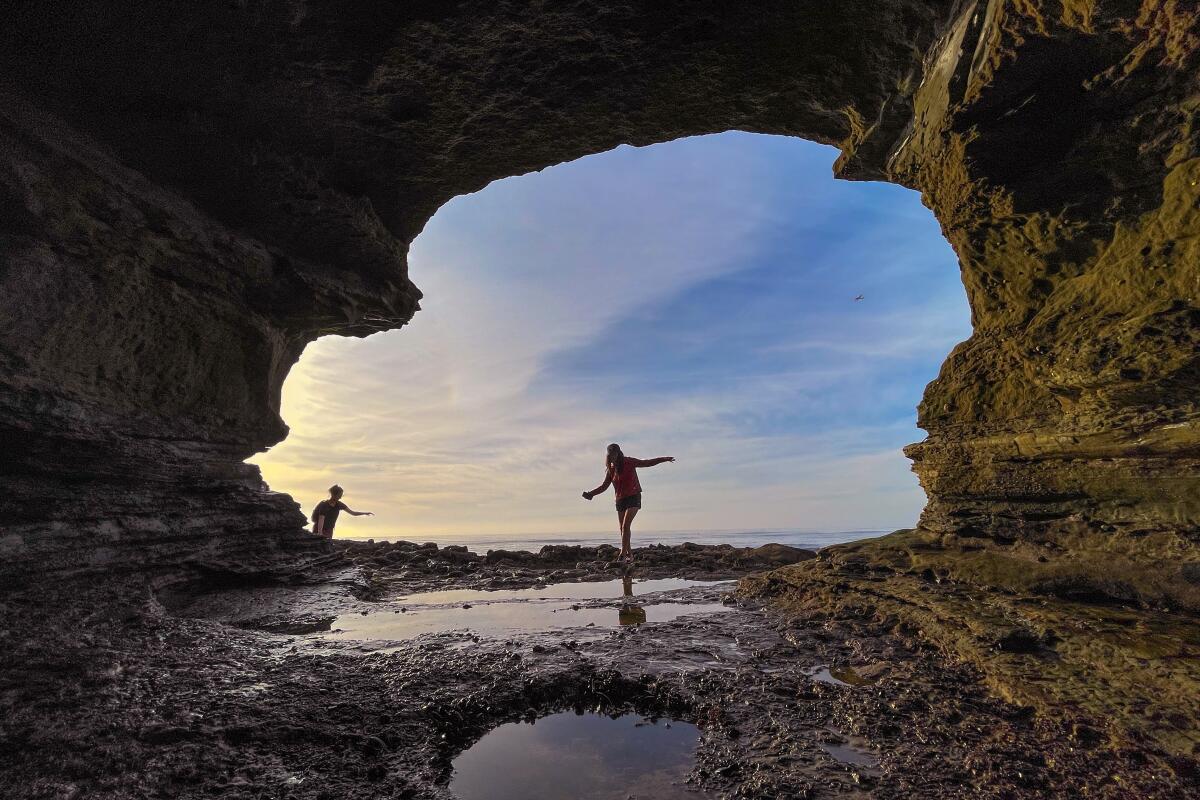
Sunset Cliffs
First, find the cave from aboveground. There is a chain-link fence around it, so it’s easy to spot. Then walk north along Sunset Cliffs Boulevard toward Hill Street. When you find a rocky hillside where you can see the beach down below, you have found the way down. Once by the water, follow the shoreline south until you reach this majestic cave.
You cannot access this cave unless there is a very low tide (-1.5 or lower on the tide table), and you must use caution to get there and back safely. On the way out, look for smaller caves along the beach that sport a velvety red algae bloom.
There is street parking on Hill Street or Sunset Cliffs Boulevard.
Sign up for The Wild
We’ll help you find the best places to hike, bike and run, as well as the perfect silent spots for meditation and yoga.
You may occasionally receive promotional content from the Los Angeles Times.



